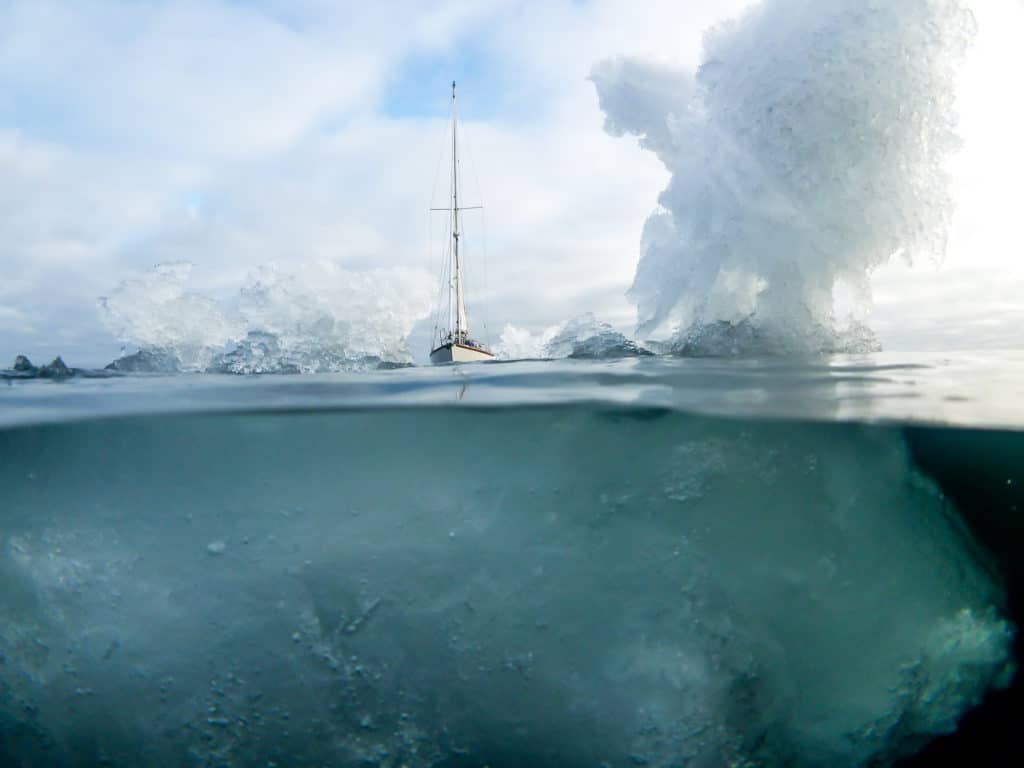
We probably should have used the rare calm August day to put miles under the keel. Instead we used it to get as close to the polar pack ice as we could. As keen photographers, my husband, Seth, and I hoped to find the small herd of walruses that scientists in Barrow, Alaska, had told us were in the vicinity. Maybe even a polar bear resting on a floe. We ended up having to content ourselves with a few ringed seals and a distant gray whale, but both of us soon forgot our disappointment as the ice thickened. There was just enough breeze at first to let us hold our course under sail and take in the silence and majesty that is so rightly part of the Arctic’s reputation.
Here was a sense of being utterly alone in what are perhaps the earth’s most remote reaches: the Arctic Ocean, at the edge of the summer pack ice. I thought I had sensed something like this before, on passages crossing the world’s other oceans, but this seemed to be of a greater — and lonelier — scale. The only human sound was the creak of our boom. The feeling that that was it, for many, many miles, was palpable. All around was a watery, icy horizon. I heard the crackling of melting growlers and a tinkling as our bow pushed icy flakes aside. Clouds gathered overhead and cast the sea in a silver pallor. The ocean heaved in a long, steady swell, lifting and dropping the white floes. Atop the swell, I saw an unbroken line of chaotic ice, parts of it pushed up into strange looming forms after a winter of grinding pressure and wind. At first glance it looked like landfall, but of course it wasn’t: It was the polar sea itself, stretching for miles across the top of the world and touching again on the shores of Siberia.
Next to wildlife, Seth and I love to photograph our classic Celeste underway, so we launched our dinghy, Li’l Namba, for one of us to row away with camera and AIS-equipped VHF radio. I’m usually the one in the dinghy, so Seth went this time. Then I was truly alone, navigating the growlers. Seth grew smaller and smaller as he rowed through the ice. A few of the floes were bigger than the dinghy. Picking my own way forward, I suddenly realized I could hear surf — very distantly, but still surf. Depths all around me were about 300 feet, so it took me half a second to realize that the sound was the swell rolling into the ice. The crackling growlers, the vast sea and sky, the strangeness of something other than water in the middle of the ocean — none of that rivaled the otherworldly quality of this new sound.
Fifteen minutes later, Seth’s voice came over my VHF: He was all done with the photography and rowing back. It wasn’t quite relief that I felt as he brought the dinghy alongside — I hadn’t actually worried that anything would go wrong, given the calm and the preparations we always make — but I felt suddenly warmer with him back in the cockpit.








